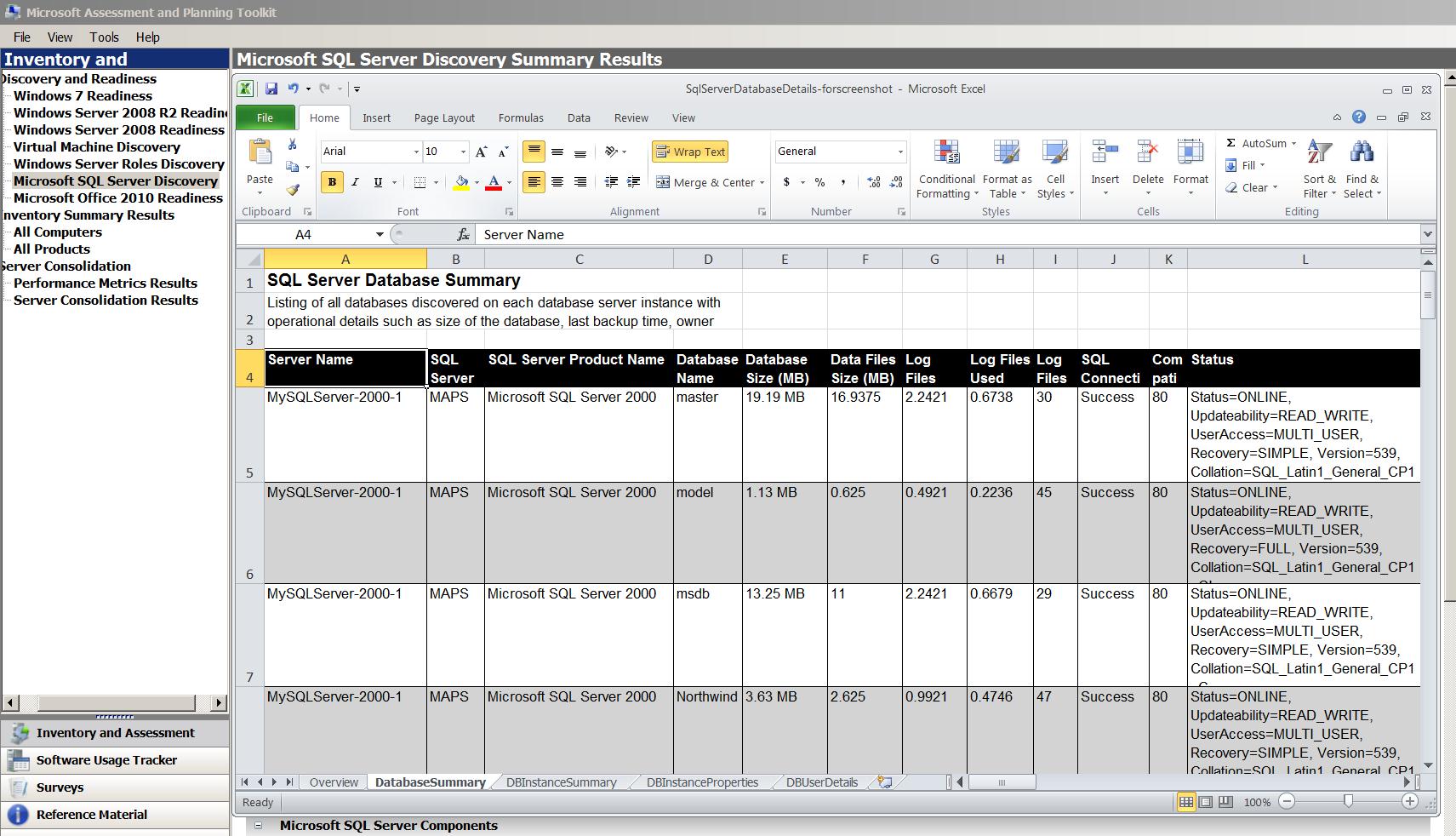SQL Server Consolidation Report in MAP 5.0
We have announced the general availability of MAP 5.0 during Worldwide Partner Conference (WPC). We are excited to see strong response and following to MAP 5.0. In this blog, we would like to explore "SQL Server Consolidation report", one of the new features of MAP Toolkit 5.0. With MAP 5.0, SQL server database information is collected and summarized in the SQL consolidation report. MAP 5.0 supports SQL Server 2008 R2, 2008, 2005 and 2000.
MAP 5.0 is a great starting tool for your SQL Server consolidation effort. Instead of manually figuring out the SQL instances in your network, issuing SQL queries to each SQL Server instance and pulling the data together by yourself, the newly added database inventory engine in MAP 5.0 discovers SQL Server instances in your network. It gathers and pulls database information together and presents a SQL consolidation report of your current SQL Server environment. With the SQL consolidation report, you will have a comprehensive view of your SQL Server environment to facilitate your consolidation effort.
In MAP 5.0, a new SQL Server inventory scenario is introduced. After selecting the SQL Server scenario, you can specify SQL Server names manually or rely on the automatic discovery mechanism of MAP to discover existing SQL Server instances. With the SQL Server instances discovered, the MAP SQL Collector then collects SQL Server database information. The SQL Server database information is collected through two mechanisms: 1) establishing database connection via the SQL Server ADO.NET provider and 2) through the SQL WMI provider. To establish a database connection, you can specify SQL or/and Windows authentication. The same Windows authentication can be applied for retrieving data from the SQL WMI provider or a different authentication can be provided separately.
The SQL Server database information collected through database connection includes information collected through SQL Server system stored procedures and system catalogs, for example, product version, database name, database users, database role, server-wide configurations, last backup date, etc. The information collected through SQL WMI provider includes performance counter information, for example, data file and log file size and log file used size. The SQL Consolidation report provides combination view of the data collected.
Here is a screen shot of one of the workbook in the SQL consolidation report,

You can use the database information collected by MAP 5.0 database discovery engine for your consolidation effort analysis. For example, you can use the SQL Consolidations report to view all your SQL Server 2000 instances, databases and database users to help you decided how to consolidate your SQL 2000 server to 2005 or 2008. Combined with the SQL Assessment report, you can find out the operation system, CPU and the system memory of a particular SQL Server instance to best allocate and consolidate your SQL Server across your organization.
Next steps:
- Download the MAP 5.0 Toolkit.
- Reivew the MAP overview DEMO
- Help us spread the word-share the download link with your friends.
- Checkout MAP web site and download sample reports.
Joyce Chen, Senior Software Design Engineer